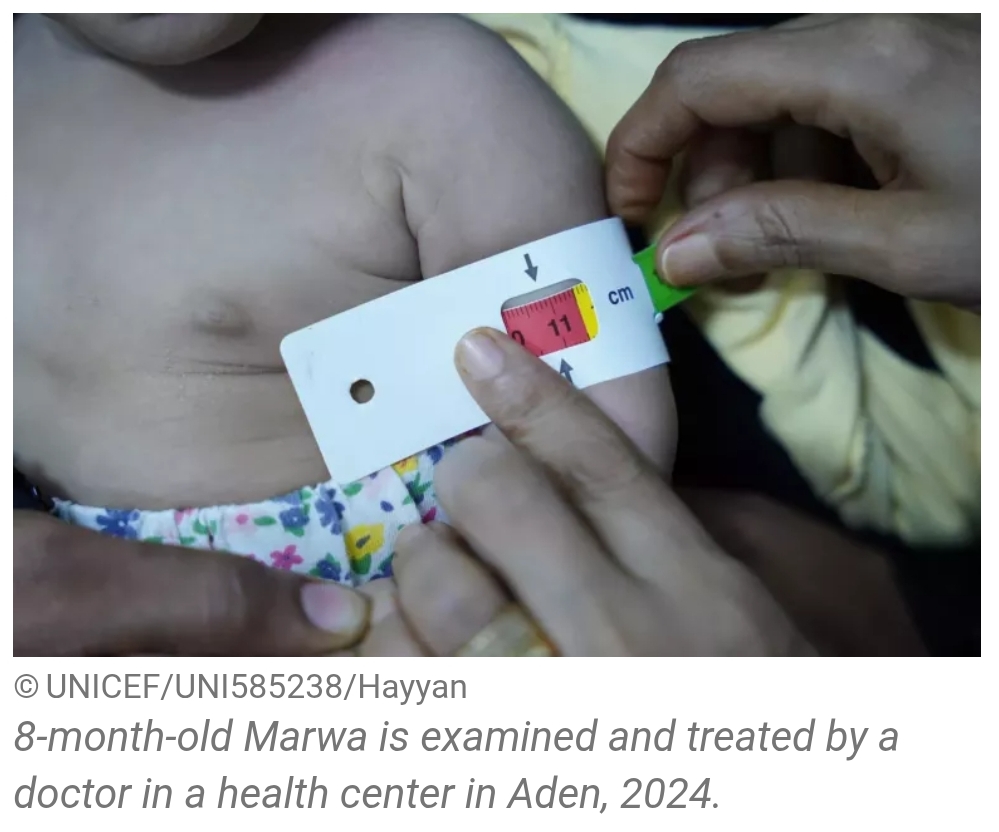Yemen Faces Deepening Food Insecurity Crisis in Government-Controlled South, UN Agencies Warn.
Nearly 5 million people face crisis or emergency hunger levels, with worsening conditions projected through early 2026 amid funding cuts, economic collapse, and extreme weather.
Yemen:
Yemen is sliding deeper into a humanitarian emergency as nearly half the population living in Government-controlled areas in the south now suffers from acute food insecurity, according to a new joint press release from the Food and Agriculture Organization (FAO), World Food Programme (WFP), and UNICEF.
The latest Integrated Food Security Phase Classification (IPC) update, released on June 22, reveals that approximately 4.95 million people in southern Yemen are facing Crisis-level hunger or worse (IPC Phase 3 and above) between May and August 2025. Of these, 1.5 million people are in Emergency (IPC Phase 4), marking a concerning increase of 370,000 people compared to the previous analysis from November 2024 to February 2025.
Projections for the next period—from September 2025 to February 2026—paint an even grimmer picture, with an additional 420,000 people expected to slip into severe food insecurity, raising the total to 5.38 million people, or more than half of the population in those areas.
Economic Meltdown and Climate Shocks Fuel Hunger
Yemen’s escalating food crisis is driven by a toxic combination of economic collapse, currency depreciation, conflict-related disruptions, and increasingly extreme weather conditions. The delayed planting season and the looming threat of flooding in July are compounding pressures on fragile agricultural systems. Moreover, the spread of plant and livestock diseases, including desert locust infestations, threatens food production and rural livelihoods.
The situation is particularly alarming for internally displaced persons (IDPs), low-income rural households, and vulnerable children, who are suffering from declining livelihood opportunities and have exhausted most of their coping mechanisms.
“We are deeply concerned that more and more people simply do not know where their next meal is coming from,” said Siemon Hollema, Deputy Country Director of WFP in Yemen. “At a time when we’re grappling with historic funding shortages, this growing crisis demands immediate international support.”
Nutrition Emergency: Millions of Children at Risk
UNICEF warned that the worsening food insecurity is closely linked to Yemen’s alarming malnutrition crisis. Currently, 2.4 million children under five and 1.5 million pregnant and lactating women are acutely malnourished across the country. Malnutrition not only increases the risk of death and disease, but also causes lifelong consequences for children’s growth and development.
UNICEF Representative Peter Hawkins emphasized that at least five of 17 livelihood zones in Government-controlled areas are expected to experience deteriorating nutrition outcomes in the coming months. “Scaling up interventions is critical, but it must be sustained to make a real impact,” he stated.
Agriculture: A Lifeline at Risk
FAO stressed that agriculture remains one of the few viable pathways to reduce hunger in Yemen and to transition from crisis response to long-term resilience. However, the sector is under severe threat from both natural and economic shocks.
“With poor and delayed rainfall in April, the already fragile planting season is at risk,” said Dr. Hussein Gadain, FAO Representative in Yemen. “If we don’t act now, we risk not only a poor harvest but also a collapse of local food systems. Urgent agricultural support can help safeguard food production and livelihoods.”
Humanitarian Efforts Under Strain
Amid shrinking global aid budgets, agencies including WFP, FAO, and UNICEF are reprioritizing humanitarian interventions to focus on the most affected areas. This includes integrated support in food assistance, nutrition, WASH (Water, Sanitation, and Hygiene), health, and protection sectors.
However, UN agencies are united in calling for urgent and sustained international assistance, both humanitarian and development-focused. Without immediate funding and long-term economic solutions, millions could fall deeper into hunger and poverty.
A Plea for Action
The joint release underscores the urgency of scaling up support to prevent famine conditions in parts of southern Yemen. The UN agencies are urging donors and the international community to step forward with flexible, predictable, and multi-year funding to prevent a catastrophic deterioration of living conditions.
“This is not just a food crisis,” said one official. “It’s a crisis of livelihoods, health, and dignity.”
With projections worsening by the month, the message is clear: Yemen’s hunger crisis must not be forgotten. Without decisive action, the lives of millions—including millions of children—hang in the balance.


